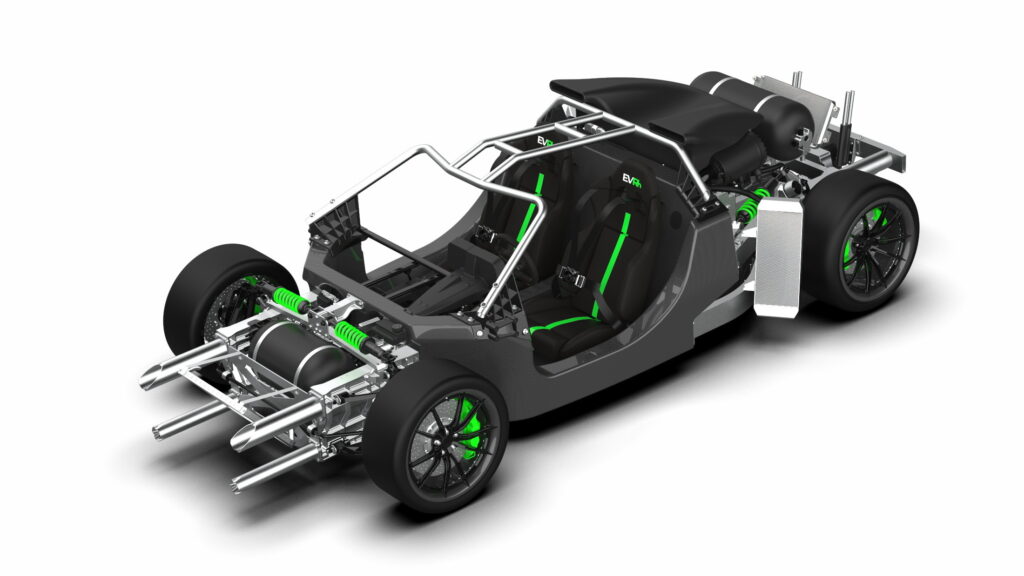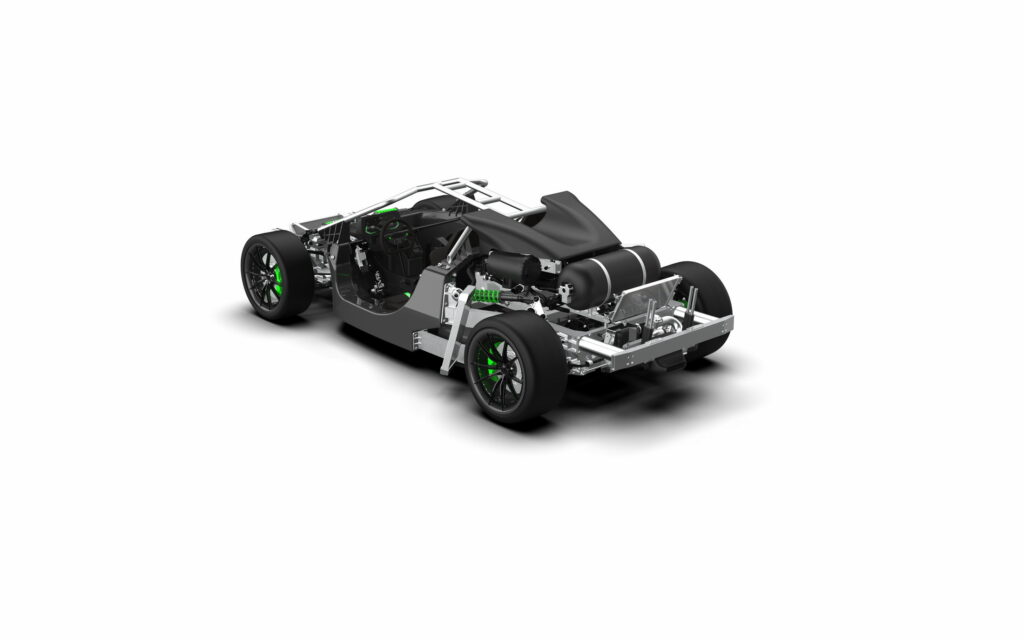The EVRh platform features a hydrogen fuel cell system and a lightweight composite tub, perfect for manufacturers who need to get a green supercar on the road in a hurry
3 hours ago
 –>
–> 
–>
Exactly one year after unveiling its all-electric EVR platform, WAE Technologies (formerly known as Williams Advanced Engineering) is revealing the hydrogen fuel-cell alternative. Ready to be utilized by third-party companies, the EVRh platform will be able to make vehicles that reach 62 mph (100 km/h) in less than 2.5 seconds.
The new product is based on the EVR unit, but replaces the big 85 kWh battery with an H2 fuel cell system. By taking advantage of the reaction between hydrogen and oxygen, it creates the electricity that powers the car.
The power will be stored in a liquid-cooled FCEV battery pack that can charge at rates of 120 kW and the platform is capable of discharging 430 kW (577 hp/485 PS) of power. The fuel tank and battery system are located in the center of the car for optimal weight distribution, and offer an estimated 372 miles (600 km) of range.
advertisement scroll to continue
Read: Williams Advanced Engineering Has Developed An EV Platform For Niche Brands

Thanks to the composite construction of the central tub, WAE Technologies claims that automakers will be able to build a car that weighs less than 4,189 lbs (1,900 kg), and can hit 62 mph (100 km/h) as fast as the upcoming Lamborghini Revuelto.
Both AWD and RWD are supported on the platform, and the design of the central tub is intended for hardtop and targa vehicles. However much roof is on the car, WAE says that the EVRh platform has been designed to take advantage of active aerodynamics.
Thanks to its lightweight tub, its ability to feature numerous motors, and its potential for advanced aerodynamics systems, the manufacturer estimates that vehicles based on the EVRh platform will be able to finish a lap of the Nürburgring in as little as 7:20 – roughly the same amount of time it took a Ferrari 488 GTB to round the track in 2016.
Intended for both track-only and roadgoing vehicles, WAE suggests that the platform is ideal for automakers who want an accelerated avenue to production with limited development time. In addition, it says that third-party companies could create both all-electric and hydrogen models side-by-side thanks to the similarities between the EVR and EVRh platforms.

